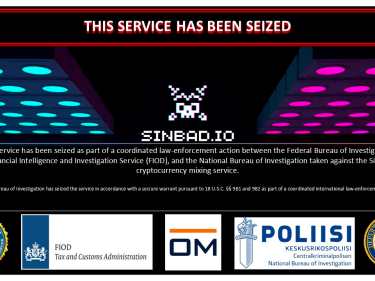This article originally appeared in First Mover, CoinDesk’s daily newsletter, putting the latest moves in crypto markets in context. Subscribe to get it in your inbox every day.
CoinDesk 20 Index: 2,008.80 +0.39%
Bitcoin (BTC): $68,897.73 +0.86%
Ether (ETH): $2,473.42 +0.81%
S&P 500: 5,728.80 +0.41%
Gold: $2,742.19 +0.38%
Nikkei 225: 38,053.67 -2.63%
Bitcoin and other major cryptos traded little changed on the final day before the U.S. presidential election. BTC edged back toward $69,000, around 0.8% higher in the last 24 hours. The broader digital asset market was more muted, rising less than 0.5%. From being a few dollars away from a new record last week, bitcoin pulled back to a low of $67,600 on Sunday, seemingly in tandem with a retreat in the more pro-crypto Donald Trump’s chances of election victory. With only hours remaining before the first polls open in some eastern states, it seems traders are sitting on their hands until they have a clearer picture of where this one is headed.
Perceived winning odds of Democrat Kamala Harris continue to rise on betting platform Polymarket, with users buying and selling hundreds of thousands of favored shares in a bump for market activity. Shares of Harris winning the election surged to 43 cents ahead of Tuesday’s vote, up from 33 cents on Oct. 30. Republican Donald Trump’s shares fell, dropping from 66 cents to 57 cents. Meanwhile, polling aggregator Real Clear Polling gives Trump a microscopic edge at 48.5%-48.4%. The increase in Harris’ odds might be due to traders hedging their bets, according to a CoinDesk analysis, with a study of trades above $10,000 suggesting both large bets on Harris and strategic trading to protect against a Trump loss.
Singapore’s central bank said it will introduce new measures to advance tokenization in financial services. The Monetary Authority of Singapore (MAS) wishes to form commercial networks to deepen liquidity of tokenized assets, develop an ecosystem of market infrastructures, foster industry frameworks for tokenized asset implementation and enable access to common settlement facilities for tokenized assets. “We are encouraged by the keen participation from financial institutions and fellow policymakers to co-create industry standards and risk management frameworks to facilitate commercial deployment of tokenized capital markets products, and scale tokenized markets on an industry wide basis,” Leong Sing Chiong, deputy managing director for markets and development, said.
:format(jpg)/cloudfront-us-east-1.images.arcpublishing.com/coindesk/EDFG7BNZGNBJJBT6UDVSW4GMEY.png)
-
The chart shows yields on the U.S. 10-year note and the three-month bill, the spread between the two and the S&P 500 since 1985.
-
The spread is fast de-inverting, just 20 basis points short of normalizing or turning positive.
-
Previous de-inversions were characterized by a renewed downtrend in the S&P 500 and presaged U.S. recessions marked by vertical shaded portions.
-
The latest de-inversion, however, may not be bearish for stocks and other risk assets, including cryptocurrencies, as it is accompanied by an acceleration in money supply, which tends to be a bullish signal for scarce digital assets like bitcoin, André Dragosch, Bitwise’s director, head of research for Europe.
-
Source: MacroMicro
– Omkar Godbole








